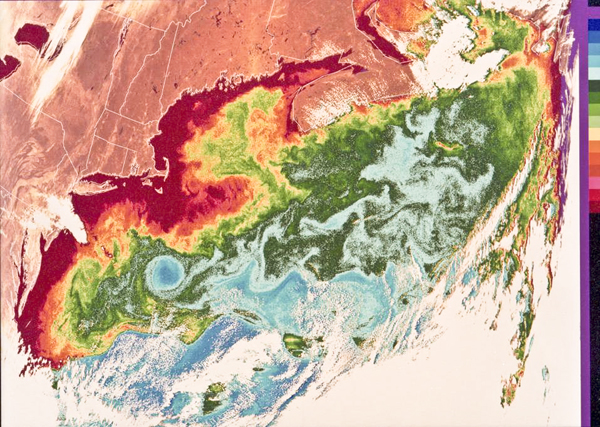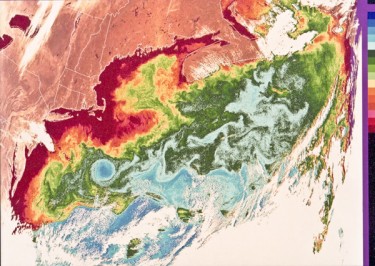

Optical oceanography, the study of visible phenomena in ocean water, is a highly specialized field of research being conducted at the University of Miami’s Rosenstiel School of Marine and Atmospheric Science (RSMAS).
Headed by physics professors Kenneth Voss and Howard Gordon, the research is being conducted on small, drifting organisms known as phytoplankton.
Using visible satellites, orbiting geosynchronically above the earth’s surface, a group of UM professors and graduate students are trying to form a correlation between ocean color and phytoplankton concentrations in the water.
“My work, which mainly takes place over the open ocean, looks at measurements of the light field in the water column to learn more about particulates in the ocean,” said Voss, chairman of the physics department. “By measuring the ratio between blue and green light in saltwater you can measure the amount of phytoplankton in the ocean.”
Their research deals with calibrating the satellites so they can accurately determine the color of the ocean based on the amount of light being reflected off the surface.
“The first satellites dedicated to optical oceanography were launched in 1978 and since then have been refined considerably to give us a vast network of sensors that provide a great deal of data to the scientific community,” said Gordon, who has been working on the project for several years.
The final goals of this research project is to have fully calibrated satellites that use the surface color of the water to accurately calculate the amount of phytoplankton in any portion of the ocean.
With this data, scientists could potentially form links between phytoplankton count and ocean temperature, giving insight into the exceedingly controversial topic of global climate change.
Science Scoop is a new bimonthly column devoted to informing students of research happening on our campus.
Jonathan Lebowitz is a sophomore meteorology major and may be contacted at jlebowitz@themiamihurricane.com.






